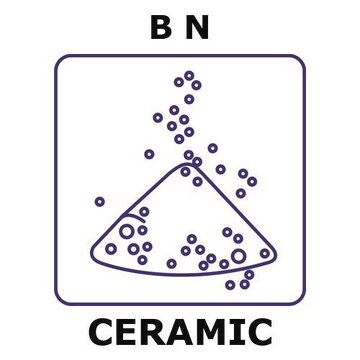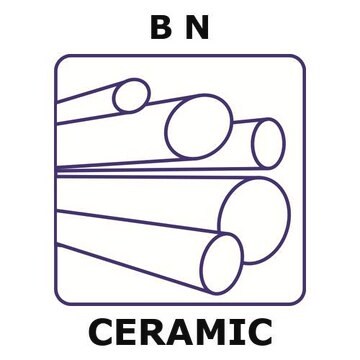Kluczowe dokumenty
790532
Boron nitride
nanopowder, <150 nm avg. part. size (TEM), 99% trace metals basis
Synonim(y):
Biały grafit, Monoazotek boru, Sześciokątny azotek boru
About This Item
Polecane produkty
Poziom jakości
Próba
99% trace metals basis
Formularz
nanopowder
śr. rozm. cząst.
<150 nm (TEM)
gęstość
2.29 g/mL at 25 °C (lit.)
ciąg SMILES
B#N
InChI
1S/BN/c1-2
Klucz InChI
PZNSFCLAULLKQX-UHFFFAOYSA-N
Szukasz podobnych produktów? Odwiedź Przewodnik dotyczący porównywania produktów
Powiązane kategorie
Zastosowanie
Kod klasy składowania
13 - Non Combustible Solids
Klasa zagrożenia wodnego (WGK)
WGK 3
Temperatura zapłonu (°F)
Not applicable
Temperatura zapłonu (°C)
Not applicable
Wybierz jedną z najnowszych wersji:
Masz już ten produkt?
Dokumenty związane z niedawno zakupionymi produktami zostały zamieszczone w Bibliotece dokumentów.
Klienci oglądali również te produkty
Produkty
Boron nitride nanotubes (BNNT) are close structural analogs of carbon nanotubes (CNT), which are high aspect ratio nanotubular material, where carbon atoms are alternately substituted by nitrogen and boron atoms.
The production of hydrogen by catalytic water splitting is important for a wide range of industries including renewable energy petroleum refining and for the production of methanol and ammonia in the chemical industry.
Nasz zespół naukowców ma doświadczenie we wszystkich obszarach badań, w tym w naukach przyrodniczych, materiałoznawstwie, syntezie chemicznej, chromatografii, analityce i wielu innych dziedzinach.
Skontaktuj się z zespołem ds. pomocy technicznej



